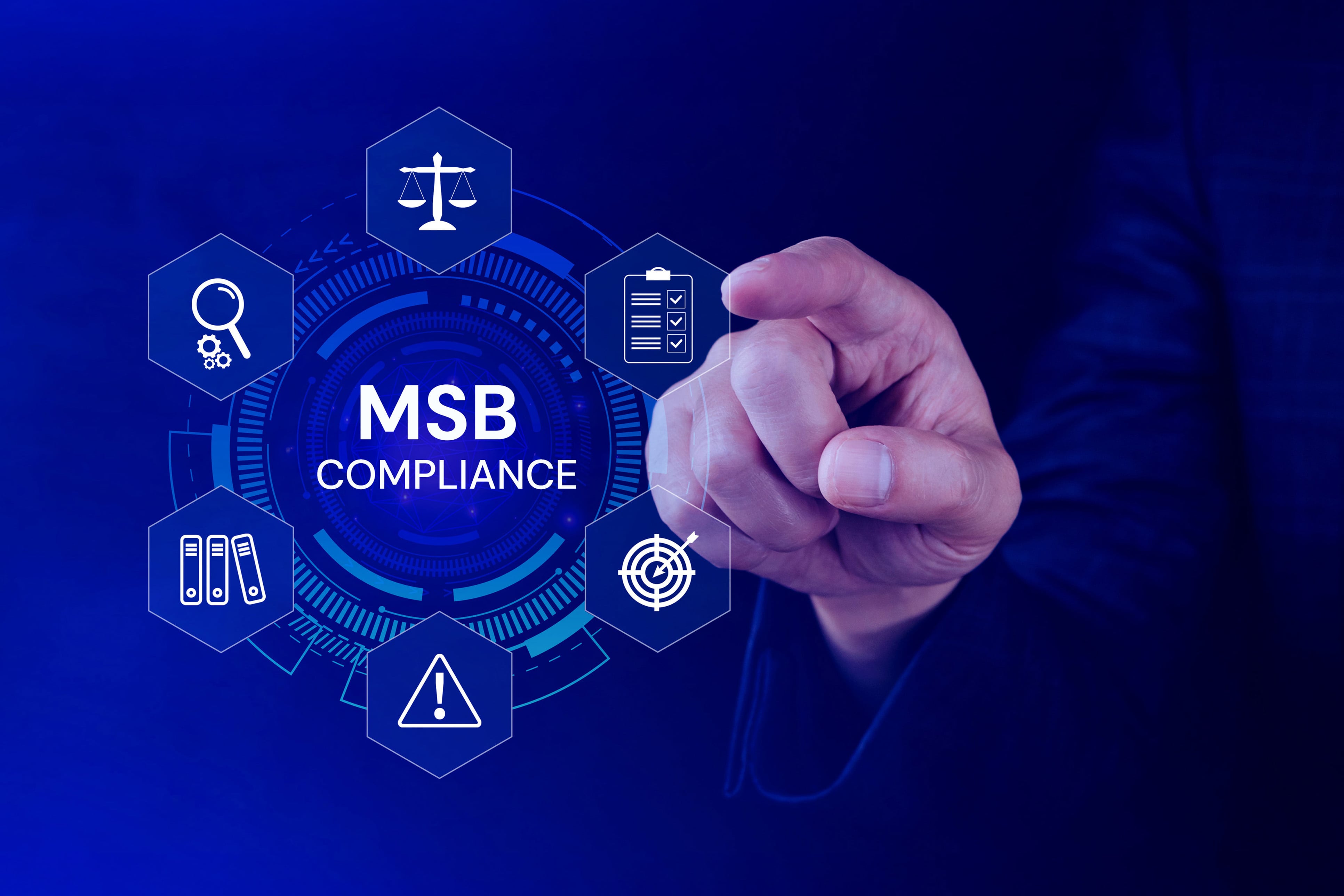Building the Fintech Dream


The Latest Content
Financial institutions operate in an environment where a single missed anomaly can escalate into severe fraud losses, customer distrust, or major regulatory repercussions. With financial crime evolving rapidly, the need for modern AML compliance software has intensified. In the first half of 2025 alone, AML and sanctions-related fines surged by 417%, reaching a staggering $1.23 billion globally—a clear sign that regulators are cracking down on outdated systems and manual processes. Institutions can no longer rely on legacy tools; they need intelligence, speed, and regulatory alignment. Platforms such as FlexComply, developed by leading global fintech conglomerate FlexM, are helping institutions stay ahead of these growing threats through real-time screening and automated compliance oversight.
Why Financial Institutions Now Rely on AML Compliance Software
As digital payments, cross-border transfers, and instant onboarding become standard, fraudsters are exploiting speed and technology to their advantage. They use synthetic identities, mule networks, and cyber-enabled fraud to bypass fragmented, rules-only systems. Compliance teams are overwhelmed by manual reviews, high false positives, and increasingly complex regulatory expectations.
This is why institutions are adopting intelligent compliance solutions that incorporates automation, behavioural analytics, and machine learning. For banks regulated under Singapore’s stringent frameworks, the move toward RegTech AML Singapore solutions is accelerating, especially as MAS heightens expectations for real-time monitoring, reporting accuracy, and strong governance under MAS AML compliance software requirements.
The global shift is clear: The AML compliance software market is projected to reach $9.3 billion by 2031, driven by the need for smarter, scalable, AI-powered compliance tools that reduce operational pressure while strengthening institutional resilience.

How AML Compliance Software Prevents Fraud Across the Customer Lifecycle
Modern compliance platforms detect and prevent financial crime by unifying onboarding, monitoring, screening, and reporting into one intelligent ecosystem. Here’s how they strengthen fraud prevention without slowing down legitimate users.
1. Stronger KYC and Enhanced KYB Onboarding Processes
Onboarding has become a primary target for fraudsters leveraging fake IDs, shell entities, and synthetic identities. Across global markets, including regulated environments such as Singapore's KYB and KYC frameworks, increasingly require digital, automated, and continuous verification.Advanced platforms now help institutions:
- Verify personal and business identities in real time
- Detect forged, altered, or manipulated documents
- Screen applicants against sanctions, PEP, and adverse media databases
- Identify UBOs and unwrap complex ownership structures
- Auto-capture information using high-accuracy OCR
- Generate adaptive, behaviour-driven risk scores
FlexComply enhances this entire lifecycle by validating IDs from 195+ countries, detecting liveness fraud, mapping ownership networks, and updating risk dynamically as new behaviour emerges. These capabilities align with MAS expectations in Singapore as well as broader global RegTech AML standards for accurate, digital onboarding and continuous monitoring.
2. Real-Time Monitoring With Behavioural Intelligence
Criminals constantly modify their methods, rendering static rules insufficient. Intelligent AML compliance software analyses behavioural patterns to detect:
- Abnormal transaction velocities
- High-risk cross-border routes
- Structuring and layering movements
- Suspicious counterparties
- Early signs of mule-account behaviour
FlexComply blends rules-based and behavioural analytics to reduce false positives, ensuring critical alerts aren’t buried under noise.
3. Continuous Screening & Dynamic Risk Scoring
Financial crime evolves throughout the customer relationship. Continuous monitoring lets institutions stay ahead of risk by:
- Running daily sanctions and watchlist updates
- Refreshing adverse media findings
- Recalculating risk scores instantly
- Flagging deviations from expected behaviour
This proactive approach is essential for meeting MAS AML compliance software standards, which emphasize ongoing vigilance—not just point-in-time checks.
4. Automated Reporting & Audit-Ready Documentation
Regulators demand timely, accurate submissions with complete audit trails. Automation improves compliance by:
- Generating STRs with structured data
- Recording all investigator actions and notes
- Streamlining MAS and global reporting workflows
- Providing unified dashboards for quick case review
This reduces manual effort and lowers the risk of filing delays or compliance gaps.
5. Beneficial Ownership Transparency & Entity Verification
Global regulators are prioritizing UBO transparency to combat shell-company misuse. Automated KYB onboarding Singapore features support:
- Digital KYB verification
- Jurisdictional registry checks
- Identification of UBOs and sub-entities
- Continuous entity-level screening
These capabilities reflect broader RegTech AML Singapore trends toward data-driven entity verification.

The Shift Toward Integrated, Intelligent Compliance
Across markets, regulators are pushing for real-time oversight, consolidated monitoring, and seamless case management. Fraud, cybersecurity, and AML no longer operate in silos—criminals exploit connections between them. Modern AML compliance software merges these layers, enabling institutions to detect cyber-enabled fraud, suspicious payment flows, and identity manipulation within one environment.
Solutions like FlexComply—embody this shift: bringing onboarding, monitoring, fraud analytics, sanctions screening, and reporting together in a single, automation-driven compliance engine.
Conclusion: A Modern Defense for a Modern Risk Landscape
Rising fraud sophistication, tighter regulations, and exponential digital growth demand stronger and smarter controls. By adopting advanced MAS AML compliance software, institutions build a resilient defence that catches anomalies early, automates oversight, and reduces operational strain. Combined with the growing need for RegTech AML Singapore innovation and stronger KYB onboarding Singapore processes, intelligent compliance platforms help banks and fintechs prevent fraud long before it reaches customers.
Modern AML compliance software is no longer a back-office function—it is the foundation of trust, safety, and long-term growth in today’s financial ecosystem. For institutions seeking an end-to-end AML/CFT framework that enhances oversight, strengthens fraud prevention, and supports regulatory alignment, FlexComply offers a proven, intelligent approach.
Explore how FlexComply can transform your compliance operations at flexcomply.flexm.com or learn more about FlexM’s broader fintech capabilities at flexm.com.

In July 2025, the Monetary Authority of Singapore (MAS) imposed record penalties totaling S$27.45 million on nine financial institutions for anti-money laundering breaches. This enforcement wave signaled a clear wake-up call across the region, reinforcing the urgency for stronger digital controls that align with rising fintech compliance RegTech Singapore expectations. As financial institutions shift toward automation and real-time oversight, many are turning to advanced compliance engines to meet these demands. Among the solution providers supporting this transformation is FlexM, a leading global fintech conglomerate whose compliance platform FlexComply enables regulated entities to strengthen KYC, AML and risk operations in line with MAS frameworks.
Why Strong Governance Makes Singapore the Compliance Leader
Singapore’s regulatory model is built on clarity, accountability and digital-first policy design. MAS has consistently introduced precise expectations around customer due diligence, transaction transparency and real-time reporting. These expectations are reflected in stringent MAS KYC requirements that demand accuracy, speed and complete auditability.
This solid regulatory foundation creates a strong starting point for modernising compliance operations. Institutions quickly recognise that traditional manual reviews are no longer viable when regulatory expectations demand unified screening, continuous monitoring and instant decision-making. As these expectations intensify, the need for reliable AML compliance software Singapore becomes unavoidable.
The clarity of Singapore’s regulations does more than set rules. It creates confidence, attracting global fintechs and financial institutions who seek stable yet progressive regulatory environments where innovation can flourish within structured boundaries.

Technology Adoption Accelerating Through Market Growth
Regulatory clarity has directly contributed to a surge in compliance technology adoption. Recent market data shows that the Singapore Data Compliance Software Market was valued at USD 3.5 billion in 2024 and is expected to reach USD 10.2 billion by 2033, growing at a CAGR of 12.5 percent from 2026 to 2033. This rapid expansion illustrates how institutions are prioritising automation over manual workflows.
As businesses adopt digital banking models, cross-border payments and real-time operations, the need for scalable KYC solution Singapore platforms becomes central to risk mitigation. The shift to cloud-native infrastructures, API-driven integrations and AI-backed compliance engines has driven institutions to replace outdated legacy systems with intelligent platforms that unify screening, verification, monitoring and reporting.
This is where compliance engines like FlexComply come into the picture for a growing number of organisations. They offer modularity, automation and alignment with MAS regulatory expectations, enabling institutions to advance from reactive compliance to proactive risk management.
Rising Financial Crime Risks Strengthening the Need for Automation
The rise of technology adoption also aligns with a growing threat landscape. IBM’s 2024 ASEAN report highlighted that data breach costs in the region have reached record highs, with the financial services sector experiencing the costliest breaches at S$7.48 million per incident. These figures underscore the increasing exposure institutions face across their digital ecosystems.
Higher transaction volumes, cross-border financial flows and the sophistication of cybercrime have stretched traditional compliance teams beyond their limits. Delays in manual reviews create vulnerabilities, while fragmented systems lead to inconsistent customer risk scoring. To address these challenges, institutions require unified monitoring tools capable of detecting anomalies quickly, scoring risk dynamically and providing real-time alerts.
This environment has prompted businesses to pursue intelligent solutions aligned with fintech compliance RegTech Singapore structures, where proactive oversight replaces reactive investigation.

Why Singapore Sets the Global Standard for RegTech Adoption
The progression from regulation to technology adoption and then to data-driven oversight highlights the interconnected forces behind Singapore’s leadership. Several structural strengths amplify this position.
Singapore maintains a mature financial sector where global banks, digital banks, fintechs and MSBs operate side by side. This mix naturally drives competitive pressure to adopt advanced compliance systems that enhance customer experience while meeting strict oversight requirements. The country’s innovation sandbox empowers companies to test and refine RegTech solutions in controlled settings, accelerating time to deployment.
Additionally, Singapore’s focus on cybersecurity, data governance and digital identity reinforces a culture of trust. This culture supports the adoption of high-performing compliance systems that meet MAS standards, including AML compliance software Singapore and end-to-end onboarding engines.
The Future of Compliance in Singapore Becoming a Strategic Advantage
As institutions across the region prepare for increasing regulatory expectations, Singapore demonstrates how compliance can evolve from a cost centre into a strategic differentiator. Automated verification, continuous monitoring and AI-led insights not only protect institutions but also enhance customer experience through faster onboarding and greater transparency.
FlexComply, the end-to-end compliance solution, reflects this new compliance paradigm where systems adapt to regulatory changes, support growing transaction volumes and maintain real-time visibility across customer lifecycles. Its presence reinforces the broader industry movement toward predictive compliance.
Singapore has proven that strong regulation and innovation can advance together. The country’s approach sets a global example for how financial ecosystems can remain safe, competitive and innovation-ready. To know more about FlexComply, visit https://flexm.com/flexcomply

Money Service Businesses sit at the center of an increasingly complex financial ecosystem. They move value across borders, connect legacy finance with emerging fintech models, and serve millions of customers who rely on fast, compliant and reliable services. But as the sector expands, so do its operational and regulatory vulnerabilities. Even well-established MSBs are finding that growth exposes gaps their legacy systems cannot absorb — a pattern consistently highlighted by leading global fintech conglomerates like FlexM, whose modular platform architecture is built specifically for MSB scalability. In this environment, choosing a scalable Money Service Business platform has become a structural, not optional, decision.
The Industry Has Outgrown Its Traditional Infrastructure
Money Service Businesses now operate within one of the fastest-expanding and most complex financial environments in the world. The scale of value moving across borders has fundamentally shifted. The global cross-border payments landscape is projected to reach US $290 trillion by 2030, signalling not only rapid expansion but also an urgent need for more resilient, intelligent infrastructures capable of supporting such unprecedented flows.
At the same time, the global remittance market — a core operational channel for MSBs — is expected to reach US $744.8 billion in 2025. This surge highlights just how central MSBs have become to cross-border value movement, financial inclusion, and alternative financial rails.
Yet despite this scale, MSBs often operate on outdated, fragmented systems built for a different era. Manual onboarding, spreadsheet-driven reconciliations, disconnected AML tools, and channel-specific workflows all create bottlenecks that compound as the business grows. A modern money service business software resolves these limitations by creating a unified ecosystem where customer onboarding, risk scoring, monitoring, and reporting operate cohesively rather than in silos.

Regulation Has Entered a New Phase — and Money Service Business Platform Are on the Front Line
Compliance is no longer episodic; it is continuous.
The most significant example of this shift came in October 2025, when Canada introduced sweeping AML reforms that tighten MSB registration, strengthen sanctions-reporting requirements, and elevate expectations for transaction traceability and governance oversight. These changes signal an international trend: regulators expect MSBs to demonstrate control, transparency, and auditability at the same level as major financial institutions.
This rise in scrutiny makes a scalable MSB compliance platform indispensable. Instead of retrofitting new rules into legacy processes, MSBs require systems that adapt in real time — recalibrating workflows, updating risk logic, recording audit trails, and supporting ongoing monitoring automatically. FlexM’s modular compliance stack, for example, enables MSBs to adjust rapidly to regulatory shifts without operational disruption.
How a Unified MSB management system Reduces Operational Risk
While regulatory pressure is highly visible, operational strain often becomes the hidden obstacle that prevents MSBs from scaling. As MSBs add new corridors, payout partners, digital channels, agent networks, and customer types, their internal complexity grows exponentially.
This increased complexity typically manifests as:
- inconsistent onboarding decisions
- duplicated customer records across systems
- slow case resolution due to manual reviews
- siloed data resulting in incomplete risk views
- rising operational cost as teams expand linearly with volume
A scalable MSB management system alleviates these issues by consolidating data, automating repetitive workflows, standardizing decision logic, and giving compliance and operations teams a unified real-time view of customer and transaction activity. This reduces cost-to-serve, lowers error rates, and allows MSBs to expand sustainably.
Customer Experience Has Become the Real Test of Modern money service business software
Modern MSB customers expect:
- fast, seamless onboarding
- real-time transaction visibility
- consistent decisioning
- predictable turnaround times
- omnichannel continuity
Whether these customers are individuals, SMEs, marketplaces, or digital platforms, they expect immediacy and clarity — expectations that strain fragmented systems.
A unified money service business software ensures that customer journeys remain consistent even under heavy transaction loads. FlexM’s customer-centric architecture demonstrates how MSBs can maintain service standards while supporting complex multi-corridor, multi-partner environments.

Why Scalability Defines the Next Generation of MSB Leaders
For MSBs, scalability means far more than handling additional volume. It means:
- Regulatory scalability: adapts to new rules, jurisdictions, and reporting structures without painful system rebuilds.
- Operational scalability: workflows remain stable and efficient as activity multiplies.
- Risk scalability: monitoring improves with scale, rather than degrading under pressure.
- Customer scalability: experience quality remains consistent across channels and growth cycles.
- Technology scalability: infrastructure remains reliable during peak loads and expansion phases.
This is the type of scalability required to survive the next decade of regulatory and competitive transformation.
Scalable Money Service Business Platform: The New Competitive Edge
The MSB industry is entering its defining period. Transaction volumes are rising, compliance expectations are intensifying, and customer journeys are becoming more digital and demanding. A scalable Money Service Business platform is no longer an optional upgrade. It is the backbone of MSBs that intend not only to grow, but to lead in a sector where resilience, adaptability, and compliance readiness define long-term success.
FlexM’s modular ecosystem — both compliance, and remittance — gives MSBs a single, integrated foundation built for real-world scale. Discover how your MSB can modernize with confidence: visit flexm.com to learn more.

In today’s hyper-regulated financial landscape, compliance is not just a checkbox—it’s the backbone of operational trust and long-term scalability. For fintechs, money service businesses (MSBs), and emerging digital banks, the ability to manage compliance seamlessly is critical to sustainable growth.
Financial institutions spend billions annually on compliance. The overall market for financial crime compliance is projected to reach over $55.47 billion by 2032, indicating a massive increase in spending and a growing reliance on technology to manage these costs. This makes selecting the best compliance management software for fintech not only a strategic choice but also a competitive differentiator. FlexM, a leading global fintech conglomerate, with its award-winning compliance platform, FlexComply, has been at the forefront of empowering regulated entities to simplify compliance while scaling with confidence.

The Rising Importance of Compliance in Fintech
Early enforcement actions in 2025 show regulators intensifying their focus on fintechs, neobanks, and digital financial platforms. In the U.S., LPL Financial received a $3 million FINRA penalty for AML failures tied to penny stock surveillance, while Block Inc. (Cash App) faced a coordinated $80 million multi-state enforcement action for BSA/AML program deficiencies. These early cases signal a proactive regulatory stance toward emerging financial platforms and newer risk vectors across the digital finance ecosystem.
As fintechs expand across borders, compliance demands become more complex—spanning AML/CFT obligations, data protection laws, and dynamic KYC/KYB requirements. The challenge is no longer just about adhering to regulations; it’s about doing so efficiently, without stifling innovation. That’s where compliance management solutions steps in—integrating automation, AI, and analytics to transform risk oversight into a proactive advantage.
Fintech startup platforms Singapore and across Asia, for instance, face some of the world’s most rigorous compliance standards under the Monetary Authority of Singapore (MAS). For such players, adopting a scalable fintech platform for MSBs ensures alignment with multiple jurisdictions while minimizing manual oversight. The goal is to stay audit-ready, reduce false positives, and improve decision-making—all through a unified compliance lens.
Key Features to Look For
- Comprehensive Identity Verification
A good compliance solution must support real-time KYC/KYB verification, This not only enhances user trust but accelerates onboarding without compromising regulatory requirements.
- Automated Screening & Monitoring
Continuous screening against global sanctions, PEPs, and adverse media lists is vital. The best compliance management software for fintech automates these checks, offering ongoing monitoring that updates dynamically as new data emerges.
- Risk-Based Assessment Frameworks
Fintechs need adaptive risk scoring—factoring customer behavior, geography, and transaction velocity. Scalable platforms can customize these rules to fit business models while staying regulatorily compliant.
- Transaction and Threshold Monitoring
Smart monitoring tools detect unusual activities in real time, flagging suspicious transactions before they escalate. Automation helps teams prioritize alerts based on severity rather than volume.
- Regulatory Reporting & Case Management
Automated STR/SAR generation, complete audit trails, and unified case management dashboards make investigations faster and more transparent—
- Automation-Driven Analytics
Machine learning can predict emerging compliance risks by analyzing patterns across customer segments and jurisdictions.
How Scalability Shapes Compliance Success
Startups often choose tools that solve immediate problems, but as they expand, they realize the need for scalable, modular solutions. A modular banking infrastructure fintech approach enables seamless integration of new regulatory features, APIs, and data models without overhauling existing systems. This agility ensures fintechs can stay compliant as they grow—launching new products, entering new markets, or integrating with new payment networks.
FlexComply, for example, has built its compliance framework to scale effortlessly with clients’ business growth. Its modular architecture lets financial institutions integrate compliance modules—such as AML, transaction monitoring, or UBO discovery—individually or as a full suite. This flexibility allows MSBs and digital banks to tailor solutions to their specific operational needs.

The Future of Compliance Solutions in Fintech
The next generation of compliance management will focus on predictive intelligence—systems that flag potential breaches before they happen. Cloud-native solutions, AI dashboards, and perpetual KYC frameworks will redefine compliance from reactive to anticipatory. Moreover, as digital identity standards evolve globally, interoperability between fintech ecosystems will become a compliance mandate in itself.
FlexComply continues to embody this vision—merging compliance, scalability, and innovation into a single, unified ecosystem. For fintech startup platforms Singapore and beyond, this marks the evolution from manual monitoring to intelligent, data-driven governance.
Final Thoughts
As fintechs expand across borders and digital financial ecosystems grow more complex, compliance can no longer function as a reactive function—it must operate as a strategic engine for trust, growth, and operational resilience. Choosing the best compliance management software for fintech is ultimately about enabling scale without sacrificing regulatory integrity. For MSBs navigating high-volume, multi-corridor environments, only a scalable fintech platform for MSBs can support the pace, risk, and oversight required in today’s landscape. And as product lines, partners, and jurisdictions evolve, adopting a modular banking infrastructure fintech approach ensures compliance capabilities can adapt in lockstep with business change. Companies like FlexM demonstrate how long-term compliance strength is built not through scattered tools, but through unified, scalable infrastructure that empowers fintechs to grow confidently. To learn more visit flexcomply.flexm.com or flexm.com.

Global regulators are taking a firmer stance as financial crime grows more complex and harder to detect. Recent enforcement actions have shown how quickly compliance gaps can escalate into major reputational and financial damage. Whether it is FinCEN issuing a USD 3 billion penalty to a leading North American bank or FINTRAC issuing $600K fine to a Canadian bank for failing to submit suspicious transaction reports, the pattern is the same: regulators expect stronger controls, real-time oversight, and auditable intelligence across every customer and transaction touchpoint.
For banks and fintechs, choosing the best AML compliance software in 2026 has become essential to protecting customer trust and maintaining regulatory confidence. Compliance is no longer just an operational requirement. It is a strategic defence against penalties, reputational loss, and operational disruption. This is where platforms like FlexComply, the award-winning, 360-degree compliance solution from global fintech leader FlexM, deliver meaningful value by offering a modular and intelligent ecosystem that helps institutions not only stay compliant but dramatically reduce the reputational fallout and financial exposure associated with regulatory penalties.
The Evolving Landscape of AML Automation for Financial Institutions
Today’s financial ecosystems span cross-border payments, embedded finance, digital wallets and real-time settlement environments. With every transaction carrying potential risk, manual reviews and disconnected systems simply cannot keep pace. This is why AML automation for financial institutions has become a foundational requirement for modern compliance teams.
The global digital payments market is projected to reach USD 19.89 trillion by 2026, growing at a CAGR of 24.4%. As transaction volumes accelerate, regulators are demanding more rigorous controls: smarter analytics, continuous monitoring and fully auditable reporting.

Key Capabilities That Define the Best AML Compliance Software
Modern compliance technology must do more than detect suspicious activity. The best AML compliance software in 2026 will be defined by following foundational capabilities:
- Unified Risk Intelligence – Integrating KYC, sanctions screening, transaction monitoring and customer risk scoring into one dashboard reduces false positives and improves visibility.
- Real-Time Transaction Monitoring Automation AML – AI and behavioral analytics enable institutions to detect unusual activities across borders and currencies instantly.
- Modular Scalability – A flexible AML solution platform for banks & fintechs should allow rapid adaptation to new regulations or geographies through API-first integration.
- Audit-Ready Reporting and Transparency – Generating Suspicious Transaction Reports (STRs) and audit logs automatically ensures accuracy and accountability.
Platforms like FlexComply already embed these capabilities within a unified, modular ecosystem—bridging innovation and regulation to help institutions stay one step ahead of evolving financial crime risks.
From Manual Oversight to Intelligent Automation
Traditional compliance teams spend a major chunk of their time on manual alert reviews and data collection, which creates inefficiencies—not only in manpower hours but also in the ability to detect evolving risks effectively. As financial ecosystems grow more complex, these manual processes can no longer keep pace with the volume and velocity of transactions.
This is where automation becomes the cornerstone of digital transformation. Intelligent transaction monitoring automation AML systems use behavioral analytics to learn from patterns across geographies, currencies, and counterparties. Instead of static rule libraries, they dynamically adapt to new typologies. These innovations give compliance analysts back their time to focus on investigation, not noise. And for customers, it translates to smoother onboarding, fewer verification delays, and greater trust that their data is handled securely and ethically.
AML Automation for Financial Institutions
The global AML market size is projected to grow to USD 9.38 billion by 2030 at a CAGR) of 17.8% — selecting the right AML software in this environment means looking beyond buzzwords. The evaluation criteria should center on adaptability, scalability, and explainability. Does the platform support multilingual, multi-jurisdictional compliance? Can it be deployed as a white-label solution for fintechs or integrated seamlessly into existing digital ecosystems? Is it continuously learning from transactional behavior? The best AML compliance software in 2026 will not be static—it will evolve alongside the threats it combats.
The companies that adopt a unified AML solution platform for banks & fintechs—backed by explainable AI, cross-module orchestration, and secure scalability—will not only meet compliance standards but exceed customer expectations.
By the time the next wave of regulations arrives, institutions that invested early in intelligent compliance will already be ahead. They will have built systems that learn continuously, adapt instantly, and protect both business integrity and customer trust.
The New Standard for Compliance Excellence
In 2026, compliance is no longer a checkbox—it is a strategic differentiator. Intelligent AML automation for financial institutions will determine which institutions thrive in an era of real-time, AI-powered finance.
Early adopters will operate with systems that learn continuously, respond instantly and withstand regulatory scrutiny—protecting both institutional integrity and customer experience. FlexComply’s modular, intelligence-driven design reflects this vision, empowering financial institutions worldwide to reduce compliance risk, strengthen regulatory trust and protect their brand reputation with confidence. To learn more visit flexcomply.flexm.com.

The best kind of payments are the ones that simply happen. You authorize, confirm, or transact—and it’s done. That effortless moment is powered by embedded payments—technology that allows money to move seamlessly within the platforms people and businesses already use. Across digital marketplaces, global e-commerce ecosystems, startups, banks, and even the maritime industry, embedded payments are redefining how value moves in a connected world.
At the forefront of this transformation is FlexM, a leading global fintech conglomerate driving modular innovation through FlexPay—a comprehensive yet simple platform that empowers businesses to build their own payment ecosystems. By embedding finance and payments directly into the customer journey, FlexPay enables organizations to digitize, innovate, and future-proof their business models.
What Are Embedded Payments?
Embedded payments refer to payment capabilities built directly into digital platforms that are not primarily financial in nature. Instead of redirecting users to third-party gateways or external processors, embedded systems allow payments to occur natively—within the same interface, in real time, and across borders.
For example, an e-commerce marketplace can enable instant seller settlements within its platform, a logistics firm can automate port fee payments through integrated dashboards, or a maritime business can streamline vendor disbursements across currencies—all through embedded finance technology.
The embedded payments market was valued at USD 24.7 billion in 2024 and is estimated to register a CAGR of 30.3% between 2025 and 2034. This acceleration signals how deeply integrated payment solutions have become to digital transformation strategies worldwide.

The Benefits of Embedded Payments
The benefits of embedded payments extend far beyond speed. They transform the financial backbone of an organization—improving efficiency, compliance, and customer experience simultaneously.
- Frictionless experiences
Transactions happen within the same workflow—no redirections or multiple logins. This consistency reduces friction and builds trust across global user journeys. - Better cash flow and control
With embedded solutions like FlexPay, businesses can automate settlements, track real-time payment flows, and manage multi-currency accounts from a single platform. That’s a major advantage for banks, MSBs, and cross-border enterprises. - Regulatory strength by design
For regulated entities, compliance is non-negotiable. Embedded payments frameworks integrate identity verification, transaction monitoring, and audit-ready reporting, ensuring adherence to MAS and international standards. - Cost and operational efficiency
By embedding financial capabilities into core operations, businesses reduce dependency on third-party providers and lower transaction costs while maintaining flexibility to scale. - Actionable financial intelligence
Real-time data insights from embedded systems allow companies to forecast liquidity, optimize pricing, and identify risk patterns across payment corridors.
For corporate decision-makers, these aren’t technical perks—they’re strategic advantages that drive growth, resilience, and profitability.
Embedded Payments Use Cases 2025 - 2026
Across industries, embedded payments use cases 2025 are rapidly evolving as enterprises seek to deliver seamless, integrated experiences.

E-Commerce & Marketplaces
Online retailers and B2B marketplaces are embedding payment gateways to streamline checkout, automate refunds, and manage escrow in one flow. Global payments revenue reached nearly US $1.9 trillion in 2024 after several years of strong expansion, and is projected to surpass US $2.4 trillion by 2029 as digital channels, real-time systems, and embedded models continue to reshape the financial landscape.
Financial Institutions & MSBs
Banks and money service businesses are adopting embedded finance to modernize their digital platforms, enabling customers to transact, remit, or invest without leaving the ecosystem.
Enterprise SaaS & Startups
Startups and B2B SaaS platforms are using embedded payments to integrate billing, invoicing, and client payments directly into their tools—turning financial workflows into value-added features.
Maritime & Logistics Sector
A fast-emerging area for embedded finance, maritime operators are automating supplier and port fee payments globally through integrated systems like FlexPay, which support multi-currency, real-time settlement for distributed partners.
These examples show how embedded infrastructure turns complex payment processes into connected, intelligent ecosystems—enhancing operational agility across every sector.
Why 2026 Is the Tipping Point
By 2026, embedded technology will intersect with AI, open-banking APIs, and instant-settlement rails. Analysts report that real-time account-to-account (A2A) payments are growing at nearly 40% year-on-year, especially in markets with advanced instant-payment infrastructure. This surge underpins the broader rise of embedded payments, where speed and immediacy define user expectations.
This momentum reflects an industry shift from standalone processors to integrated ecosystems—where every digital touchpoint can initiate, analyze, and complete a payment securely.
The Shift Toward Embedded Ecosystems
As industries evolve, the conversation around embedded payments is moving beyond technology—it’s about building connected ecosystems. Businesses today no longer see payments as isolated events but as the connective layer that links every touchpoint in a digital experience. This shift is turning platforms into ecosystems where customers, partners, and providers interact through shared, data-driven financial flows.
For instance, a global marketplace might combine payments, loyalty programs, and supplier financing into one unified system. A logistics company could integrate real-time invoicing, cross-border settlements, and performance tracking within its operational platform. Even regulated sectors like maritime and trade are adopting embedded models to synchronize their complex value chains.
This evolution marks a decisive step forward: from integrating payments as a feature to designing them as part of an ecosystem. By 2026, the organizations that succeed will be those that treat payments not as a service—but as a strategic infrastructure for growth, insight, and innovation.
The Road Ahead
By 2026, embedded payments will no longer be seen as an add-on feature—they’ll be the foundation of digital business models. From corporate payments and vendor disbursements to customer-facing marketplaces, every transaction will be designed to happen faster, more securely, and with greater intelligence.
And as global industries converge on this new standard, FlexM is helping businesses stay ahead—building infrastructure that not only processes payments but redefines them. With FlexPay, enterprises gain the power to make financial interactions invisible yet indispensable, unlocking a future where every transaction moves at the speed of business.
If your organization is ready to transform the way money moves, it’s time to see what embedded innovation can do for you.
Book a demo to explore how modular payment infrastructure can accelerate your digital transformation, or visit www.flexm.com to learn how FlexM is helping global businesses power seamless, secure, and scalable payment ecosystems.


.gif)



















